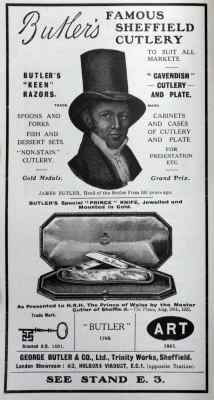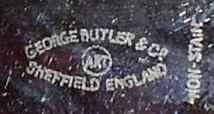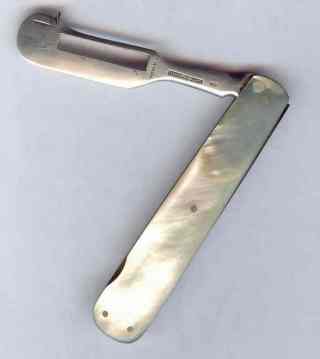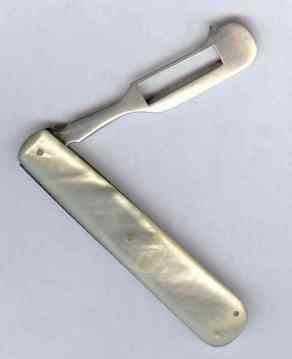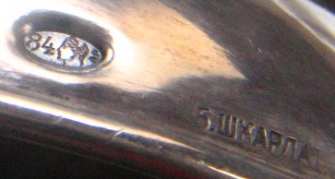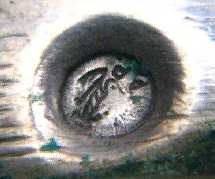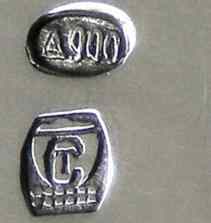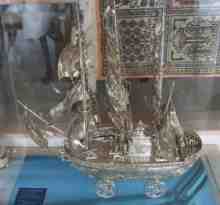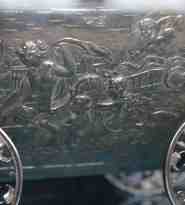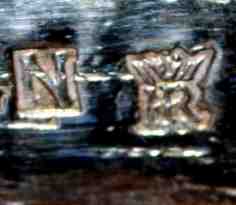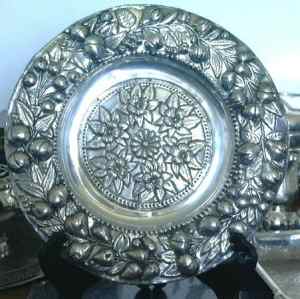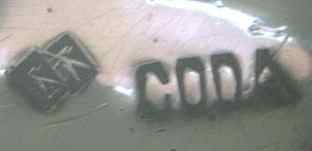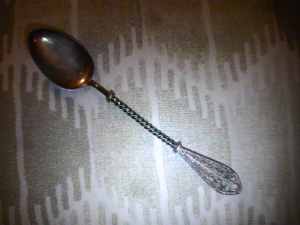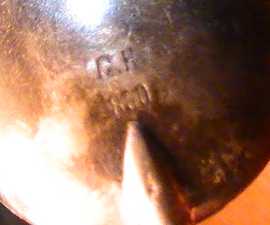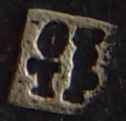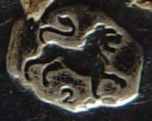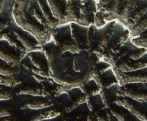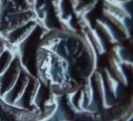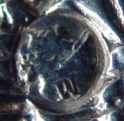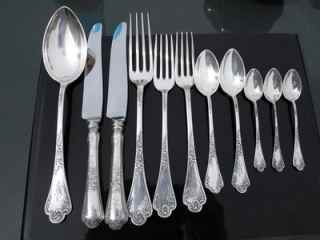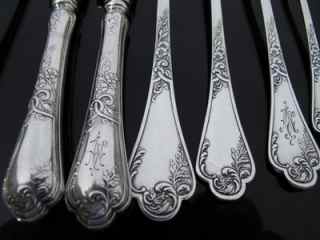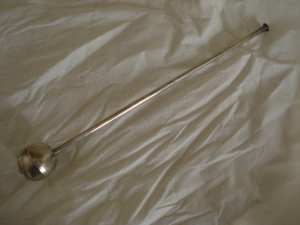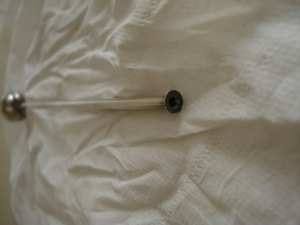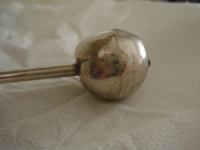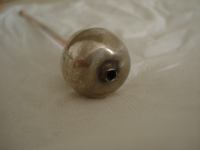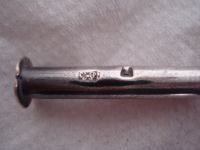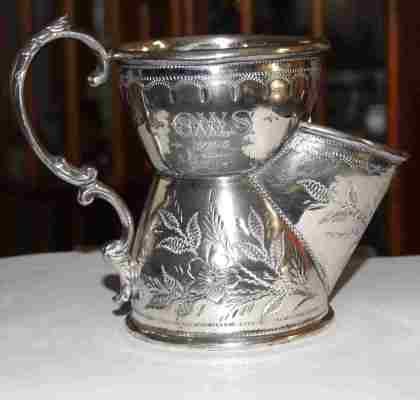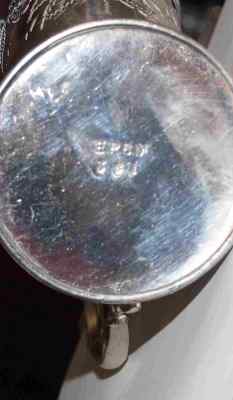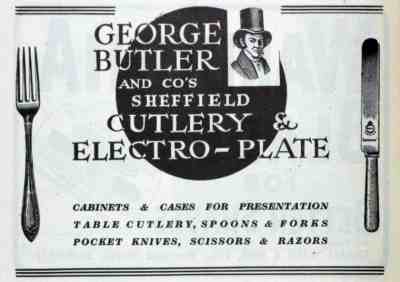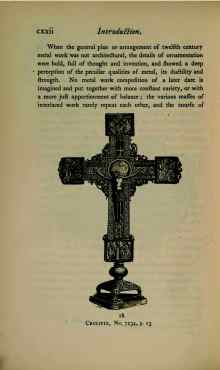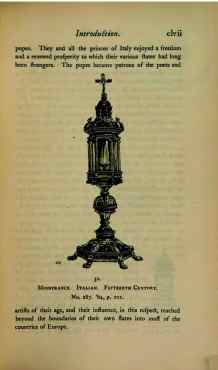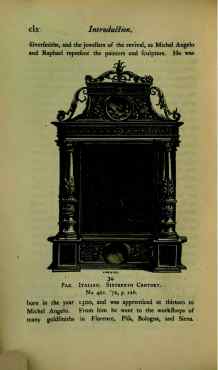| |
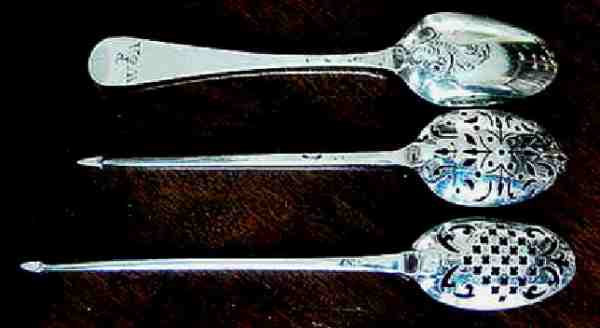
David McKinley presents:
Mote Spoon: A fraudulent conversion

I think that ASCAS readers might be interested to know
about a fraud that is common and appears to go unnoticed
by many experts in auction houses and elsewhere.
It is all too easy to obtain a mid 18th century teaspoon
through the internet or even in a junk shop for about
£10.00 or £20.00 and then, for very little effort, turn
this investment into £110.00 or £120.00 by reshaping the
handle and piercing a few holes in the bowl. Thus
creating a mote spoon......
click here

|
Welcome to new ASCAS members:
Lyn Brown - England UK
David R. Childs - England UK
Trent Downing - USA
Julien Hilber de Alberg - France
William P. Hood Jr - USA
Igor Peremislov - USA
Sofia Ramos - USA
David Rubin - England UK
Irene Schwall - USA
Sandra Summers - USA
Prabagaran Thiyagarajan - India
John J. Yale - England UK
Members' Window # 60
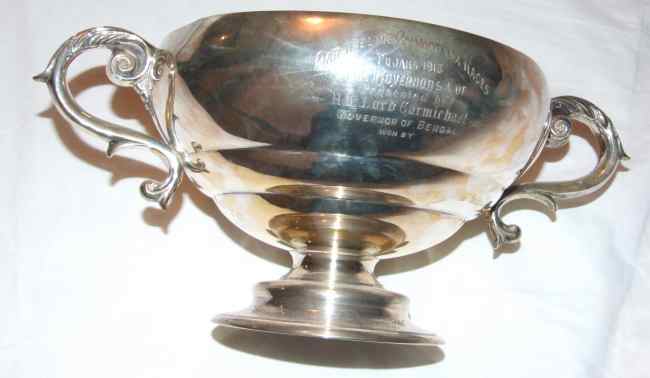
Siddarth Chand Lall and Giorgio Busetto present:
Sterling silver trophies for Indian Thoroughbreds

Thoroughbreds tend to root back to three stallions
imported into England from the Middle East in the late
17th and early 18th centuries: the Byerley Turk (1680s),
the Darley Arabian (1704), and the Godolphin Arabian
(1729).
They were bred essentially for maximum speed and having
achieved this, the modern thoroughbred now aims to
combine speed with stamina.
Although less dangerous than Byzantine chariot racing,
and perhaps less political, there lies a common
appreciation for horses. Romans went to great lengths
to keep records of names and pedigrees of successful
racing horses.....
click here

|
Larry Gralla writes:
...How do you like a mystery? I have an Elkington piece, an
orange peeler/fruit knife with an Elkington date mark I cannot
find. The piece is marked in 2 separate rectangular lozenges,
ELKINGTON, PLATE. It has a Pat. No. 3812 (1881 I believe) and
the date letter is a "C". But the lozenge is a circle with semi
circle push outs on the left and right. It almost resembles, and
you will have to pardon me, a Mickey Mouse head with ears on
both sides. I have looked in every reference I have, to include
Bradbury, Pitcher and Wyler. So far, no luck. The piece may be a
"one of" as none of the fruit knife collectors I have talked to
have ever seen it?
I can send pictures if you like and by the way, great web site.
Thank you,
Larry Gralla
....and after Bradbury, Pitcher, Wyler... you arrived in
the right place!
The mark was used in the UK to identify the "patent". Detailed
information about these marks are available in my website at
http://www.silvercollection.it/lozenge.html
Giorgio Busetto
The round mark (Postnikova-Loseva # 3871) is an assay
mark coherent with the kokoshnik mark (P-L # 3882). Both were
used by assayer Alexandra Romanova, St. Petersburg 1899-1908. I
didn't find information about the silversmith (Shkarlat).
Giorgio Busetto
The circular mark was a garniture mark struck on small items
or on auxiliary parts of an ensemble en suite.
Here the assay office was indicated by a Morse-code like series
of dots and dashes around the perimeter of the mark.

St.Petersburg
|

Moskow
|

Odessa
|

Kiev
|

Kavkaz ?
|

Vilensk
|

Riga
|

Kostroma
|

Kazan
|

Don ?
|
Stephan writes:
...I have a wonderful "centro de mesa" (I live in Spain) and
I'd need your help to identify the origin of this item. It's pure
silver, aprx. 700 gr. and a diameter from 34 cm. I know that isn't
from Spain, I think, it's possibly Mexico.
Any suggestion will be greatly appreciated.
Stephan
Robert Matheny writes:
...I have 6 spoons all alike. I received them over 25 years ago,
and had them appraised about 15 years ago.
I did not keep the information, but I have been looking for the
origins every since, without wanting to leave the spoons away
from me again.
Do you or anyone in your club have an idea as to the origins and
meaning in the markings?
I remember it was Dutch, and worth 150 dollars in 1993.
Robert Matheny
Your bracelet was made in the Netherlands (possibly in
1868). I trust in ASCAS members' knowledge for further
information
Giorgio Busetto
Some of ASCAS members have a deep knowledge of Russian
Silver. I trust in their contribution to reply to your questions.
Giorgio Busetto
Replies to questions
Hugo Keymeulen writes:
...I presume that this is a thing to collect some liquid, wine, alcohol
etc. You drop it in the liquid so it can fill itself in the bowl
en than close the top with your thumb, you can displace the
recipient to your glass, remove your thumb and the liquid flows
into
Hugo
Adam Goldsmith writes:
...The items that Tony Mason was querying are used by Sephardic Jews (from the Middle
East, Spain , Portugal and Northern Africa ) on a Saturday afternoon at the end of Sabbath
for a ritual known as Havdallah. It is difficult to date the piece and Mr. Mason could
either google Judaica or make contact with antique dealers who deal with Judaica.
Adam Goldsmith
Barry Arnol receives this reply about his silver oddity
(see April 2009 Newsletter)
Dorothea Burstyn writes:
...about Barry Arnol's inquiry, I think this item is an
electroplated shaving mug
Dorothea
Pamela Coates writes:
... about Barry Arnol question. This is a scuttle shaving mug
- most handsome. The "shaving soap" is placed on top, brush
lathered up, and soaped up to shave. My dad had one in "china"
The "pourer" spout is where the shaving brush is stored. It
looks as if the top (soap holder) comes off; this is to remove
the "drippings" of the soap.
Pamela Coates
Roderick Hall writes:
...Barry Arnol mystery object in this months newsletter is a
shaving mug, used for holding soap suds when wet-shaving. The
shaving brush was loaded with soap by inserting it into the
enlarged spout of the mug/jug. It is English silver plate,
E.P.B.M. standing for Electro Plated Britannia Metal. Britannia
metal is a tin-based alloy, similar to pewter, but harder, and
was extensively used in England as a base for silverplated goods
from ca 1880 to 1920 and beyond.
Best Regards
Roderick Hall
Bette G. Bell writes:
...The piece Barry Arnol was inquiring about is a shaving
scuttle. If you Google "shaving scuttle" you will find many in
porcelain in the same shape.
Bette G. Bell
Adam Goldsmith writes:
...The item that Barry Arnol has is a holder for an old fashion shaving brush
as I would suspect that the top has ‘drainage holes’
Adam Goldsmith
Kimberly Karkov receives this reply about his Gorham object
(see April 2009 Newsletter)
Pamela Coates writes:
... about Kimberly Karkov question. This item is indeed a
SILVERPLATED NUT CRACKER. These are usually very heavy in weight.
If you visit www.replacements.com, hit the silver tab, go to
Gorham tab and then hit the blue stripe on left side and all the
pattern photos will pop up.
You should we able to identify the pattern there
Pamela Coates
The Silver Society of Canada Inc. has a new interactive website
www.silversocietyofcanada.ca
It is completely accessible to the public -to use the website just create a username and password (we need only your valid email
address). Membership in the SSC is not a requirement, but can be taken out any time -ongoing events are posted on the website
and a complimentary one-time participation at an event is extended to future members as well as to out-of-towners.
The website administrators are Dorothea Burstyn and Kathryn Vaughn. New articles every month will make for interesting reading, please
also make use of Your space for bloging about interesting events and places, or anything connected with silver. The website also has a Gallery,
should you wish to show interesting silver photos and there is of course a Questions and Answers space, where you can post your
questions -everybody who has the right answer or thinks he has something to contribute can post a comment here. We hope for your
active participation, we know we will have fun with our new site and we all will hopefully benefit by learning more about our favorite subject:
antique and modern silver.
Dorothea Burstyn
"A PAGE per MONTH"
In this column we present a page
obtained from makers' brochures, books, auction catalogs,
advertising or whatever other printed paper related to silver,
which may be of interest for ASCAS members.
The images will be published at a "low resolution" level and for
private and personal use only
This month ASCAS presents a set of advertising of George
Butler & Co Ltd, Sheffield, lasting from 1922 to 1945 and to
1951. The firm was founded in 1681 and in 1922 was active in its
Trinity Works in Sheffield with Showroom at 62 Holborn Viaduct,
London.
George Butler & Co Ltd had a wide range of patterns of stainless,
silver plate and sterling silver flatware.
"A WORD per MONTH"
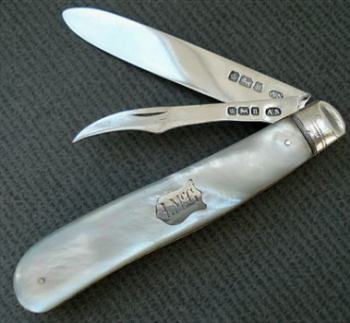
|
POCKET KNIFE
FOLDING KNIFE
FRUIT KNIFE
this is a type of small knife with folding blade.
They were made since ancient times and Roman examples of
first century A.D. knives are exhibited in British
museums.
In medieval and later times such knives were produced in
many countries.
In the 19th century, Sheffield and Birmingham in England
were the greatest centers for production of silver
folding pocket knives........
more
|
"A BOOK ON MY SHELF"
In this column we present books, new
or ancient, dealing with silver in all its aspects (history,
marks, oddities...). This isn't a "book review" but only a fair
presentation of some useful "tools" that anyone may have in the
shelf of his bookcase.
ASCAS members are invited to contribute to this column
(click to enlarge images)
The "book on my shelf" of this month presents:
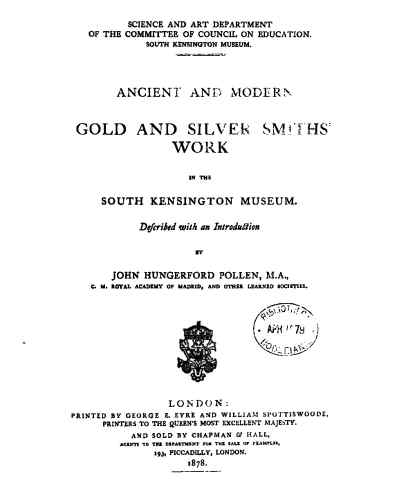 |
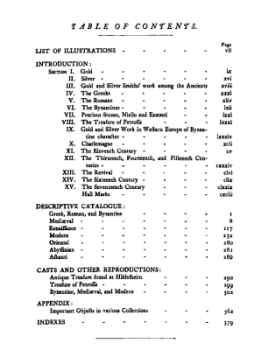 |
Closing our MAY 2009 edition of ASCAS
Newsletter I hope you have appreciated its content.
Your comments, suggestions and advice will be of great help.
My thanks to Bette G.
Bell, Dorothea Burstyn, Pamela Coates, Rudy Driessen, Jayne Dye,
Cristophe Ginter, Adam Goldsmith, Anthony de Goutière, Roderick Hall, Hugo
Keymeulen, Larry Gralla, Diana Hamann, Siddarth Chand Lall,
Robert Matheny, David McKinley, Igor Peremislov for their
invaluable contributions.
Giorgio Busetto
Secretary
DISCLAIMER AND PRIVACY POLICY
ASCAS is a community of people having a common
interest in antique silver.
It is a non-profit association without commercial links.
Membership is open to whomever has a true interest in
this subject matter.
ASCAS has no real property and no fees are requested nor
accepted from members.
ASCAS keeps in touch with its members only through
periodical newsletters, e-mails and web-site updating
and ignores and is not responsible for any other
activity pursued by its members.
Likewise, ASCAS is not responsible for opinions,
evaluation and images displayed, and in any form
published or supplied for publication, by its members
who, in any case, maintain the property of their works
and assure the respect of national and international
legislation about Intellectual Property.
ASCAS does not have the full addresses of its members (only
town, country and e-mail address are requested for
membership).
ASCAS handles and protects with care its members e-mail
addresses, will not disclose the addresses to third
parties, will use this information only to reply to
requests received from members and for communications
strictly related to its activity.
These rules are expressly accepted by submitting the
membership request.
|
|
 newsletter # 60 MAY 2009
newsletter # 60 MAY 2009











